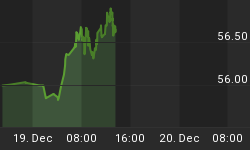If you think of logically ... when money flows into the market, stocks are being bought. When the amount of Inflowing Liquidity is in Expansion, then more and more investors are entering the market ... and that drives prices up.
However, when Liquidity is out-flowing, it is a condition where investors are removing their capital from the market. That means the impetus is on selling, and the market pulls back. When out-flowing Liquidity deteriorates to the point where the net liquidity is in Contraction, then the market experiences a correction.
Liquidity levels and its directional momentum are a key factor relative to market trending. You cannot have the market in a rally mode when Liquidity is leaving the market ... and, you cannot have the market in a correction when Liquidity is entering the market and at an Expansion level.
What does a historical Liquidity chart tell us about the market during the past 2 years?
Today's chart goes back to April of 2006. On the top graph, you can see the change in Liquidity levels during that time period relative to the New York Stock Exchange.
Notice what happened to Liquidity levels since October of last year.
Inflowing Liquidity peaked in early October. Pay attention to each peak AFTER October's peak. What do you noticed that happened to those peaks?
Answer: They all made lower tops. Lower tops and lower bottoms is essentially the definition of a down trend. With Inflowing Liquidity in a down trend, the market indexes had to follow the same direction.
When was the most recent time that Inflowing Liquidity went so low that it was in Contraction?
If you look at the chart, you can see that Liquidity went into Contraction at the very beginning of January. With Liquidity in Contraction, the market had its most serious drop of the past two years.
So, what is happening to Liquidity levels now?
Currently, Liquidity is still in Contraction and in a down trend. We just had a recent lower top that is now moving down again. The critical thing to watch now is what happens ... will Liquidity make a lower bottom, or will it hold here and move up and make a higher top? If the latter doesn't happen, then this correction will continue until Liquidity inflows increase and move into Expansion territory.
(This chart is posted every day on our paid subscriber sites.)

My Best, Personal "non-stock" Tip for 2008 ... it will save you from wasting a lot of time, it will eliminate a huge source of frustration, and protect you at the same time.
What is it? See this link for my answer: My 2008 Best Personal Tip.















